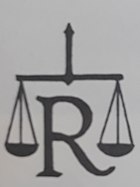People's State of Reuss
| coat of arms | flag |
|---|---|

|

|
| Situation in the German Reich | |

|
|
| Arose from | Reuss older line and Reuss younger line |
| Incorporated into | State of Thuringia |
| Data from 1919 | |
| State capital | Gera |
| Form of government | republic |
| Consist | 1919-1920 |
| surface | 1143 km² |
| Residents | 211,324 inhabitants |
| Population density | 185 inhabitants / km² |
| Religions | 96.6% ev. 2.1% Roman Catholic 1.3% others |
| Reichsrat | 1 vote |
| License Plate | RA / RJ |
| administration | 3 district associations |
| map | |

|
|
The People's State of Reuss , which existed from 1919 to 1920, was a state of the German Empire in the east of what is now Thuringia . The people's state Reuss had a non-contiguous area of 1143 square kilometers, 211,324 inhabitants (1919) and was divided into three district associations.
history
Even before the First World War , the two principalities of Reuss older line with the capital Greiz and Reuss younger line with the capital Gera were owned by Prince Heinrich XXVII. ruled from the younger line in personal union. After the fall of the monarchy and the proclamation of the Republic in the November Revolution , he announced his retirement on November 11, 1918th The two Russian principalities became free states and from December 21, 1918 formed an administrative community.
On February 2, 1919, state elections were held in both Free States, which the USPD won. On April 4, the united Russian state parliament passed the law on the unification of the two Russian free states into one people's state of Reuss, as well as on the provisional constitution and administration . After the unification, a government was formed with the independent state ministers Karl von Brandenstein from Gera and William Oberländer from Greiz.
On May 1, 1920, the People's State of Reuss and six other small states in Thuringia merged to form the State of Thuringia . Until March 1923, however, the "Reuss area" continued to exist as a higher-order municipal association with its own regional government and regional assembly. Its competencies were gradually transferred to the country. In addition, for the first 15 years after the Thuringian state constitution of 1921 came into force, a member of the state government always had to come from Reuss.
Administrative division
Three district associations were set up by the provisions of the Unification Act:
- The district association Gera comprised the area of the old district office Gera except for its exclaves Triebes and Hohenleuben , which were assigned to the district association Greiz.
- The district association Greiz comprised the area of the old district office Greiz except for its exclaves Burgk and Rauschengesees , which were assigned to the district association Schleiz and some communities of the old district office Schleiz .
- The Schleiz district association comprised most of the old Schleiz district office and the Burgk and Rauschengesees exclaves of the old Greiz district office.
Election to the state parliament
On February 2, 1919, state elections were held in both Free States. From each of them the USPD emerged as the winner.
Free State of Reuss older line
- Seats in the state parliament: 15
- Turnout: 74.7 percent
| Political party | Result | Seats |
|---|---|---|
| USPD | 44.51% | 7 seats |
| DDP | 22.67% | 4 seats |
| DNVP | 16.95% | 2 seats |
| SPD | 15.97% | 2 seats |
Free State of Reuss younger line
- Seats in the state parliament: 21
- Turnout: 81.9 percent
| Political party | Result | Seats |
|---|---|---|
| USPD , SPD | 62.16% | 13 seats |
| DNVP , DVP | 21.04% | 5 seats |
| DDP | 16.80% | 3 seats |
flag
The flag of the people's state was black, red, and gold . The coat of arms of the People's State of Reuss showed a golden lion with red armor and a red crown on a black shield , in the tradition of the heraldry of the bailiffs of Weida .
Web links
Individual evidence
- ↑ Reyk Seela: The transitional state assembly and regional representation in the Russian states and the People's State of Reuss 1919–1923. In: Thüringer Landtag, Harald Mitteldorf (Ed.): The forgotten parliaments. State parliaments and regional representations in the Thuringian states and territories 1919 to 1923. Hain, Rudolstadt 2002, pp. 233–274.
- ^ Bernhard Post, Volker Wahl: Thuringia Handbook. Territory, constitution, parliament, government and administration in Thuringia 1920 to 1995. Böhlau, Weimar 1999, p. 326.
- ^ Law on the unification of the two Free States of Reuss of April 4, 1919 . In: Collection of laws for both Free States of Reuss . tape 1919 , no. 5 . Greiz 1919, p. 27 ff . ( Digitized version ).
